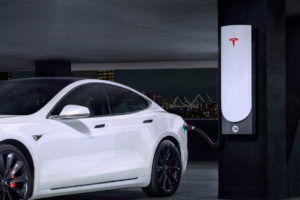As pollution fears rise and we begin to fully acknowledge just how much back-peddling we need to achieve to save our environment, teams around the world are working ambitiously on finding solutions. Whilst shifting a use of fossil fuels onto alternative energy is key, this process is long term – longer than we can afford. In the meantime, reliance on diesel will still exist – especially in developing or remote areas of the world that rely on generators. Given this reality, how do we move forwards in a way that is greener and safer for everyone?
Two young men in India think they’ve found a solution.
Arpit Dhupar and Kushagra Srivastava were enjoying some sugarcane juice at a roadstop when inspiration hit them. The cane crusher that had produced their drink was running from a diesel generator, but without the black, smoggy plumes that would usually give one away. After wondering how this was possible, the young men finally spotted that the juice vendor had added an exhaust pipe that funnelled all of the dark fumes against nearby wall. The wall had turned black from all of the soot in this concentrated an onslaught from the exhaust; seeing this made the two men think about how much carbon is in diesel, and whether this harmful source of pollution could actually be turned into something constructive. More than that – something fun.
According to BreathLife 2030, over 80% of the world’s urban residents breathe air pollution above the WHO guideline for safe air. That means that less than 20% of us are breathing the air we should be. The damage of this can’t be ignore; a shocking 4.2 million premature deaths happen every year due to air pollution, and according to Greenpeace India, it even affects the unborn, with studies showing that exposure to air pollution during foetal development can lead to brain abnormalities and cognitive impairment. With these sorts of statistics and results, pollution is an emergency situation, and any solution that can tackle the fumes we are generating today is a vital addition to the fight.
Arpit and Kushagra’s plan sounded simple, yet eccentric; instead of carbon entering the air and damaging our lungs and environment, they proposed collecting this same substance and removing it by turning it into paint. If it could turn a wall black, why couldn’t it form a paint or ink?
Their teachers and mentors were sceptical, but the visionaries weren’t deterred: they founded the company Chakr Innovation and set out to turn their theory into practice. First, they focused on designing several types of containers that could capture soot directly from genset diesel exhausts, making sure that none reached the air. From there, they focused on solving how to turn this carbon into paint and exploring other applications it could be used for.
Promoting “revolution through pollution”, the company now proudly declares the slogan, “helping you breathe by capturing pollution at the source”. The first invention of its kind, the ‘Chakr Shield’ is currently capable of reducing diesel generator emissions by 90%. As a retro-fit design, the Shield doesn’t depend on specially designed generators – instead, the device can be fitted to those already in use, making it a faster, more realistic and far more affordable solution. Attached to a genset that runs an average of eight hours a day, each Shield can produce 34 litres of ink or paint per month. This ink is now being used in screen printing for t-shirts, among other uses, and Chakr’s paint has been said to dry faster and apply better than many on the market! Best of all, the Shield has no adverse effect on the generators themselves, so there’s no reason not to use it.
Whilst initially met with doubt, Chakr is now the recipient of notable awards, partnerships and global acclaim. The company was the winner of the IndianOil Grant for New Technology Development, the Indian Innovation Growth Program, the FICCI award for Best Eco-Innovation Start-Up, the American Society for Mechanical Engineers’ Top Hardware Start-Up in India, and the University of Chicago’s Urban Labs Innovation Challenge, among others. IndianOil and the University of Chicago both continue to work closely with Chakr Innovation as R&D partners and sponsors, as well as Bosch. The team are even receiving dedicated mentorship and support from two advisors: Dr J P Gupta, Chairman of Environment Impact Assessment, and Neil Yeoh, Senior Associate of Fellowship Programs from Echoing Green.
Assisted by these mentors, Kushagra and Arpit make up half of Chakr’s leadership team. Kushagra is the company CEO, with Arpit as CTO. They work with Alok Goyal, the Head of Business Development, and Bharti Singla, Head of Strategy. The team are based in India – a fact the company highlights as fitting, as the country is home to 10 of the 20 most polluted cities in the world. Chakr’s current primary goal is to fit the Shield on as many mobile towers as possible, as these industrial structures are heavy users of diesel generators. For example, the city of Delhi sports 14,000 mobile towers, most of which have a diesel generator installed. Delhi has been ranked as one of the world’s most polluted cities, and its air quality is considered a state of emergency by the Indian government.
Chakr refer to the Shield as their “first” product, with the ambition of not only taking this invention as far as it can go, but also using it as a starting point to develop a host of other environmental initiatives. Their “revolution through pollution” is just beginning: hopefully, if the Shield and their future break-throughs can be widely implemented, it might be just in time.







